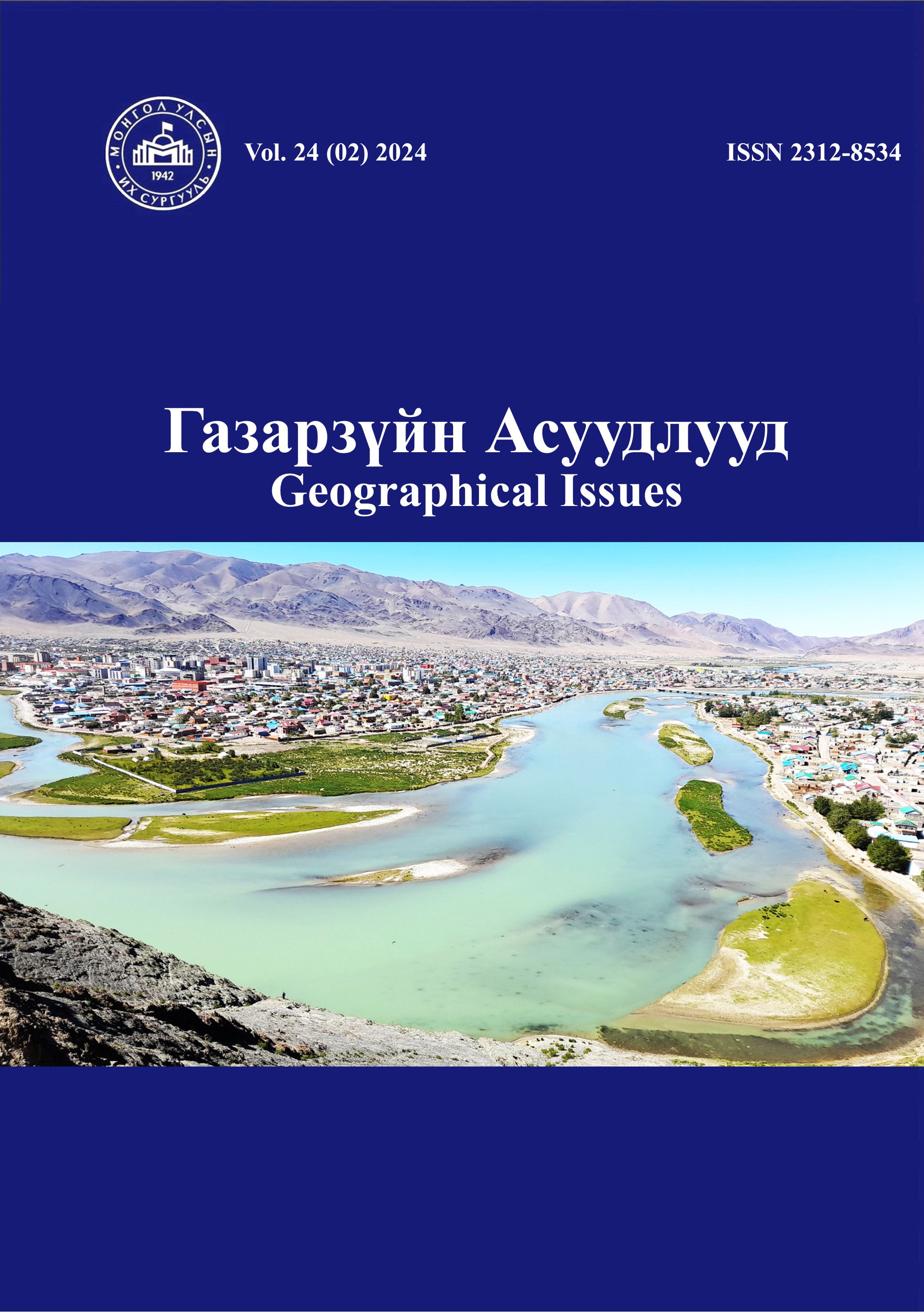Spatial distribution mapping of soil organic carbon content in permafrost region: case study in Bayanzurkh soum, North Mongolia
Цэвдэгт бүс нутгийн хөрсний органик нүүрстөрөгчийн агууламжийн орон зайн тархалтын зураглал: Баянзүрх сумын жишээн дээр
Keywords:
Permafrost, Soil organic carbon content, Machine learning, Random forest, Spatial distributionAbstract
The soil organic carbon is the core nutrient element, the main component of soil fertility, and directly affects the global carbon cycle.Due to low soil temperature and lack of water migration in permafrost, it created favorable conditions for the formation of the soil organic carbon in soils.The amount of the soil organic carbon density contained in permafrost region is three times greather than the resources of forest.According to create map of the spatial distribution on soil organic carbon content, its stocks can be calculated, and it will be important information for the carbon cycle in ppermafrost regions and their calculation.In this study, we aimed to create the spatial distribution mapping of soil organic carbon contents in permafrost zones, to identify the main drivers that affect, to test the performance, to identify the soil organic carbon content variability along different permafrost zones.The random forest regression method of machine learning was used.Study area Bayanzurkh soum in Khuvsgul province was selected as the study area and soil samples were collected from 181 study sites. As shown the results of the study, that the SOC contents based on random forest regression model is explained by 61% of the test dataset and 83% of the train dataset.From the 28 factors used in the model, Normalized Difference Vegetation Index, band 4, band5 and slopes were most importance factors. Whereas, considering that the factors by group, the optical factors were most importance. According to the mapping result, the spatial distribution of the SOC contents in Bayanzurkh soum ranges between 16.7 g/kg and 395.9 g/kg with an average content of 157.1 g/kg The SOC content in the continuous permafrost zone was average value of 170.9 g/kg, while its contents in the discontinuous zone 136.0 g/kg, and sporadic zone 136.0 g/kg.
Downloads
Downloads
Published
How to Cite
Issue
Section
License

This work is licensed under a Creative Commons Attribution-NonCommercial-ShareAlike 4.0 International License.






